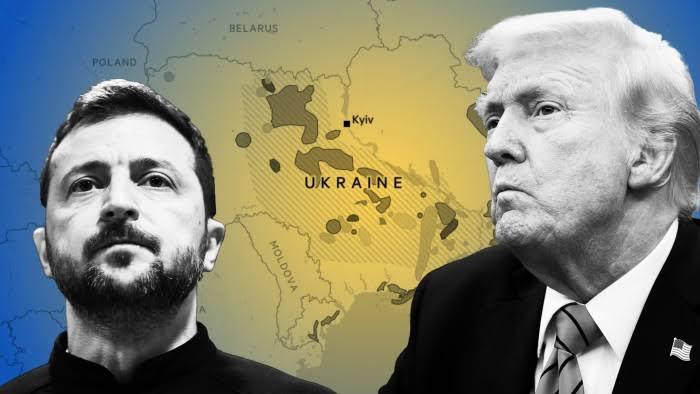
From MAGA to America: How Trump Can Prove He Is the President of All Americans
Donald Trump’s journey from a polarising figure to a leader who unites the country requires a strategic and deliberate approach. With America currently divided and political tensions at a high, it falls to Trump to demonstrate that his leadership extends beyond his base and that he truly represents all Americans. However, the path to reconciliation is not simple—it requires navigating accusations, reaching across party lines, and proving that he is the President of the United States, not merely the leader of the Republican Party or the MAGA movement.
The Challenge of Bridging the Political Divide
One of the most critical steps in this transformation lies in how Trump interacts with the Democratic Party. Throughout his presidency, Trump was consistently at odds with Democratic lawmakers, exacerbating a climate of hyper-partisanship. If he is to unify the country, he must go beyond antagonism and adopt a more collaborative stance with his political opponents. This does not mean abandoning his core policies but rather demonstrating a commitment to dialogue and cooperation.
By engaging with Democrats on crucial issues such as infrastructure, healthcare, and the economy, Trump can show that he is capable of bipartisan efforts that benefit the entire nation, not just one political faction. For instance, when addressing economic recovery, Trump could work with Democrats to create legislation promoting job creation, supporting small businesses, and strengthening the American workforce. Such initiatives would showcase his understanding of the concerns of all Americans and could also help him win back the support of Democratic constituencies in swing states where the election was narrowly decided.
Leading on Healthcare and Economic Recovery
The United States is facing significant economic challenges, and a unified approach to tackling inflation, unemployment, and economic inequality is essential for national healing. Trump’s involvement in such bipartisan economic recovery efforts would signal his ability to lead as President, not as a party figurehead. On healthcare, despite his administration’s attempts to repeal the Affordable Care Act, the country’s healthcare system remains a contentious issue. If Trump were to propose reforms improving affordability and accessibility—while seeking input from Democrats—he could signal a genuine focus on the well-being of the American people, transcending political victory.
Confronting Allegations and Rebuilding Trust
Beyond legislative efforts, Trump must also address the widespread perception that he poses a threat to democracy. Critics have often painted him as an authoritarian figure willing to undermine democratic institutions for personal gain, especially following the January 6th Capitol riot. To regain public trust, Trump needs to show humility and a clear commitment to the rule of law. While many of his supporters believe the 2020 election was stolen, the courts, including Republican-appointed judges, have dismissed these allegations. Acknowledging the legitimacy of the election, while still asserting his right to question the system, could go a long way in proving that he respects the democratic process.
Moreover, Trump must distance himself from extremist elements within his base. His failure to unequivocally condemn white nationalist groups and far-right extremists during his presidency drew significant criticism. Publicly denouncing such groups would signal his commitment to the country’s best interests, even if it means alienating some of his most vocal supporters. Addressing the role of social media in inflaming political tensions would also be an opportunity for Trump to demonstrate leadership. A balanced approach to free speech—one that protects individual rights while curbing misinformation—could help reposition Trump as a defender of democratic values.
Healing the Rifts Between Presidents
Another essential aspect of proving that Trump is the President of the United States, rather than a partisan figure, lies in mending the relationship with former presidents. During his tenure, Trump was often at odds with former leaders like Barack Obama and George W. Bush, whose criticism of his leadership style deepened the divide. By engaging in constructive dialogues with these former presidents on national security, foreign policy, and other long-term challenges, Trump could demonstrate that his leadership transcends party politics. Establishing advisory councils composed of former presidents and respected figures from both parties would reinforce the message that his focus is on national unity.
Communicating a Message of Unity
Trump’s ability to directly engage with the American people will also be crucial in proving that he is the president of all Americans. Known for his combative rhetoric, Trump must adopt a more inclusive tone, focusing on what unites the country rather than what divides it. His platform should be used to promote unity, hope, and shared values. Shifting his rhetoric to include all citizens, regardless of political affiliation, could help rebuild the trust and support he has lost.
Moreover, Trump must acknowledge the role his own actions have played in exacerbating divisions within the country. While it may not be easy for him to admit flaws, a public acknowledgement of the challenges his leadership caused—along with an apology for any harm done—would demonstrate growth and self-reflection.
Upholding Democratic Values
Finally, to prove he is not a threat to democracy, Trump must commit to upholding the core values of the United States: liberty, justice, and the rule of law. Rejecting any notion that he is above the law, and working within the constitutional framework, will be critical in restoring his credibility. By doing so, Trump can earn the trust of those who see him as a divisive figure and prove that he is capable of leading as a unifying force.
Conclusion: A Path Toward Unity
In conclusion, Donald Trump has an opportunity to prove that he is not merely the leader of a political faction but the President of the United States. By engaging with Democrats, prioritising bipartisan cooperation, and committing to the rule of law, he could help heal the divisions within the country. Whether he can rise to this challenge remains uncertain, but the possibility for a more unified, inclusive future is within reach.
Dr Brian O. Reuben is the Executive Chairman of the Sixteenth Council.



